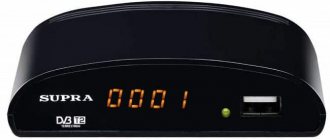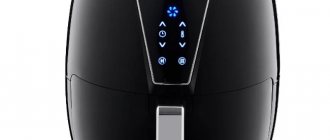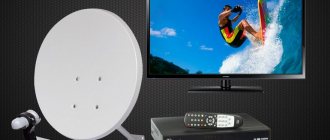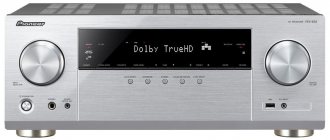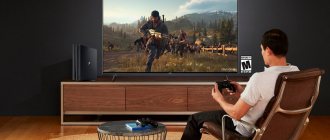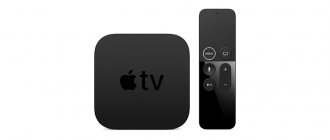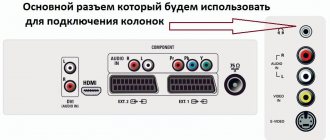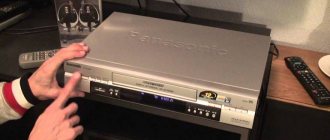Features and functions of a set-top box for digital TV
Receiver for TV. What it is? Analog television is gradually being replaced by more progressive digital television. The advantages of the latter are a higher quality picture, improved sound and an impressive number of received channels. If new generation TVs support the digital broadcast standard, then for older models you need to purchase a special receiver for the TV. This device is a kind of receiver that captures, converts, and transmits audio and video signals coming either via cable or from a satellite dish.
Unlike analog receivers, which receive signals separately, digital television channels are combined in one package, from where they are all transmitted together to the receiver for subsequent decoding and breakdown. This method is called multiplex. If in the first case the result of broadcasting different channels could differ, then in the second all channels without exception are broadcast in first-class quality. As a rule, to receive a signal, a regular antenna that comes with the TV is sufficient.
Currently, digital broadcasting is carried out in the DVB T2 format, which replaced the outdated DVB T. This standard is not the only one, although it is considered the most widespread. Most modern TVs initially have a built-in receiver, so there is no need to purchase such equipment. If you are planning to purchase a new TV, we recommend that you carefully study the instructions. Perhaps this is a model that does not require the purchase of a set-top box.
Receiver advantages:
- improves the quality and clarity of broadcasting;
- improves sound richness and clarity;
- all kinds of interference disappear;
- ease of connection;
- ease of operation;
- no fees for using the device.
The simplest digital receiver on a TV, in addition to receiving a package of certain programs, can pause the broadcast for some time. Also, fans of movies, all kinds of music and video files, and viewing photos on the big screen can use a flash drive by connecting this device through a special connector. Connecting the set-top box to a TV will make available functions such as pause, rewind, teletext, TV program, TV guide and subtitles.
Many models support Internet access via cable or Wi-Fi, which allows you to view more channels. There are also options with a built-in hard drive, turning an ordinary device into a full-fledged media center. The most advanced technology supports 3D and 4K resolution. Each set-top box has a specific set of outputs necessary for connecting various external devices.
Connecting to a TV
How to connect and configure a digital receiver is described in the following video:
The digital receiver works in conjunction with a TV. Therefore, the first thing to do is to connect the devices. The procedure does not require special knowledge and skills. You can perform the operation yourself, without the help of specialists.
Instructions for connecting the set-top box to the TV:
- connect the receiver and antenna using the cables that are included in the set of equipment for displaying TV;
- connect the set-top box to the TV;
- plug the adapter into a power outlet.
And here are the most complete instructions that will help you switch to digital.
Please note that the connection can be made in several ways:
- Via HDMI connector. This is the easiest way to establish a connection. This connector provides good signal quality. The main thing is to use the correct cable. A cheap Chinese-made wire will not be able to connect devices well, which means the signal will constantly disappear, which will negatively affect the quality of television viewing.
- Connecting equipment using “tulips” is not the best option. The fact is that such wires do not provide a high-quality connection with the satellite and display the image on the screen. As a result, various interference will occur regularly. In addition, such wires cannot withstand high temperatures, so their use in private housing construction is not recommended.
- The USB-to-USB technology connection option is only suitable for certain models. The main advantages of this connection method are its affordable price. As for the quality of the output image, you should not count on a clear, stable picture.
As for how to use a set-top box for watching digital television, there is nothing complicated about it. Using the remote control, go to settings and start searching for channels in automatic mode.
After a few minutes, all available channels will be detected. You can switch them using the console remote control.
If you need help choosing a console, watch the following video:
Types of broadcasting
There are three signal transmission options:
- satellite (DVB-S2, DVB-S);
- cable (DVB-C);
- terrestrial (DVB-T2).
A satellite receiver is an integral part of the satellite television “team”. A device connected to the dish picks up the signal and displays it on the screen. Such prefixes are conventionally divided into three groups. The first group is considered the most popular. It is designed for the widest masses of television viewers and is used to watch open channels. The second group includes receivers with a built-in decoder. They work with special access cards. In addition, this includes equipment designed to work with a specific provider. The third group is multimedia terminals that, in addition to broadcasting, perform a huge number of additional functions.
A cable receiver is a device that supports a signal and broadcasts a program package from a regional provider. To become a cable network subscriber, it is important to be within the operator’s coverage area, in addition to the receiver, to have an antenna, converter, power supply and RF cable.
The third version of set-top boxes works with digital broadcasting. Signal reception is carried out by a conventional compact indoor antenna. Such receivers are oriented towards SD and also support HD resolution.
Naturally, satellite broadcasting has the highest quality picture, cable television is in second place, and the most common terrestrial TV closes the top three.
What is a TV receiver and why is it needed?
A digital set-top box, also known as a tuner or receiver, allows you to process a signal from different sources and decode it into the required format. Let's look at why some TV owners need to purchase a device. Buy it in two cases:
- To decode a digital signal to analog . For example, if you have an old TV at home with a picture tube, to which you can only connect an antenna or composite cables to the AV connector. In this case, the receiver receives a digital signal received from a satellite dish, cable or home antenna. It processes the received data and converts it into an analog signal that the old TV “understands.”
- To process a digital signal into the desired format . A current solution for TVs that work with a digital signal, but do not have a built-in tuner, or have an old generation receiver installed.
A digital set-top box is often supplied with a satellite dish or is installed when connecting to cable television.
Reference! Almost all modern TVs can work with digital formats. MPEG is used as the main playback format. This is a basic video file extension that was approved back in the early 90s.
However, a different format is used as the transmitted signal - DVB. This is due to the technical difficulties of digital television transmission.
The tuner's job is to convert one format to another . This is where difficulties arise, since there are two main and incompatible DVB formats.
How to choose a set-top box for your TV
So, it seems that we have sorted out the question of what a receiver is for. How to choose the right device, what you need to know, and what nuances you should pay attention to when purchasing?
The choice of tuner is influenced by:
- type of broadcasting in a given area;
- supported standard;
- permission;
- the ability of the set-top box (in addition to receiving a digital signal) to read flash cards and perform the functions of a player;
- the more audio and video formats the device supports, the better;
- simple, understandable menu;
- convenient control involves the presence of a remote control and the required number of buttons directly on the body;
- the presence of the necessary connectors, in particular USB and HDMI;
- additional functions - at the request of the buyer;
- manufacturer;
- availability of a warranty period.
Depending on the functionality, there are four types of receivers:
- Budget is a prefix for infrequent viewing (for example, at the dacha). It has the most standard set of connectors, digital format, and an affordable price.
- Economy option - designed for TVs with a screen diagonal of up to 42 inches. Such a receiver will allow you to view channels from various satellite television operators, as it is equipped with a special card reader. This group contains models that write files to a flash drive.
- Middle class - these are models that can provide an excellent picture in high quality. Such receivers are currently considered the most common.
- Premium - multifunctional devices that allow you to view cable and digital channels, all kinds of files from external drives, and in various formats.
Why DVB-T2 beats the set-top box
Many users find it difficult to determine which type of receiver is better. To resolve this dilemma, we have compiled a comparative profile.
| Built-in tuner | Standalone tuner |
| You won't have to pay to buy new equipment. | Resolves the problem of refusal to support digital channels. |
| Fast signal processing. | The price starts from 1,000 rubles. |
| Available functionality and easy setup. | Easy to set up, but each has its own characteristics and names of items. |
| Use one remote control for both TV and broadcasting. | Two remote controls - for TV and for set-top box. |
How to find out the distance to a digital television tower: towers on the map in 2021
The need for a set-top box
The question of whether a receiver is needed for modern TVs worries many consumers. The answer to this depends on various factors. Firstly, how often the programs are viewed, and secondly, what are the characteristics of the available equipment.
If you want to watch programs in excellent quality, but the TV does not support these formats, buying a receiver will eliminate such problems. Purchasing a special modulator will allow you to connect the set-top box to two television receivers simultaneously.
Modern sophisticated TVs boast built-in satellite, cable or terrestrial receivers. When buying a TV to watch satellite digital broadcasts, it is important that the built-in device supports the same format.
Undoubtedly, digital television is the future. So why not join it today, especially since you don’t even have to buy a new TV to do so. A modern, high-quality receiver will save you from spending a lot of money on buying an expensive TV, while still giving you the pleasure of watching TV shows in excellent quality.
Which TVs support digital television without a set-top box - list
As of the beginning of 2021, millions of outdated devices remain in stores and in the homes of many Russians, which will definitely require a set-top box. But more and more equipment released after 2015 have built-in modules. To protect you from unnecessary expenses, check out the list of which TVs show digital channels without a set-top box in 2021:
- Samsung;
- Sony;
- LG;
- Phillips;
- Apple;
- Panasonic;
- Toshiba.
How to install Okko on Smart TV and watch for free: instructions
